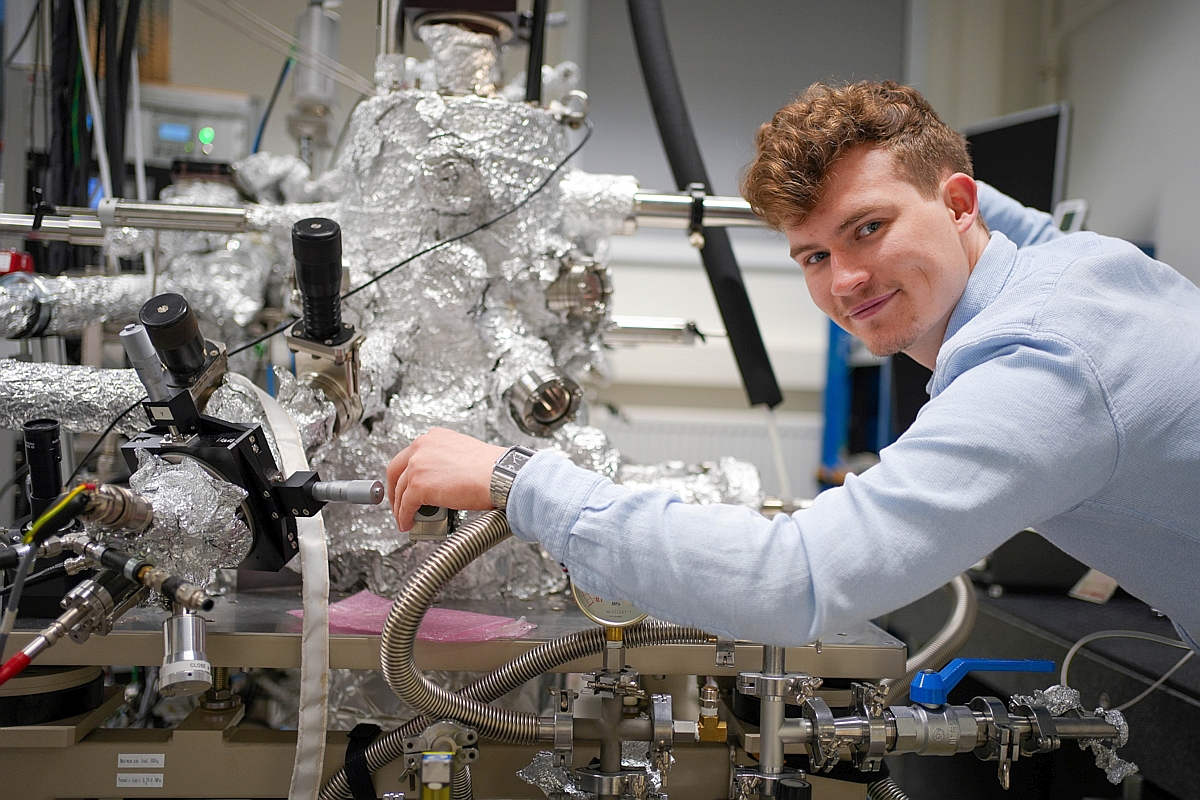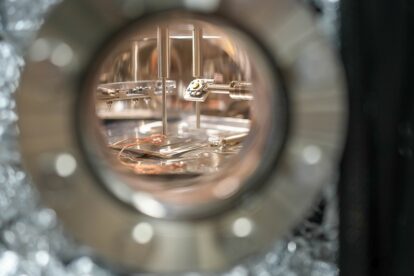
ZMN Ilmenau: Cryo-STM and liquefied helium open up a microscopic view of quantum excitations
From the smallest microchip to large data centers – information transmission is based on moving electrons. In the future, this principle could increasingly be supplemented by the use of light. Even today, the use of light signals enables significantly faster data transmission – in fiber optic networks, for example. In addition, light transports information in an energy-efficient manner. Light-based technologies are therefore seen as the key to meeting the growing demand for high-performance systems in future fields such as autonomous driving, robotics and quantum computing.
At the Department of Experimental Physics/Surface Physics I at Ilmenau University of Technology, scientists such as Max Kögler are conducting basic research with the aim of uncovering the physical mechanisms underlying light emission from individual molecules. In order to achieve this goal, model systems – also known as NanoLabs – are created on surfaces. They allow changes to be made on an atomic scale and the response of the system to be recorded experimentally. This manipulation of matter can only be carried out under extreme conditions, which is why the doctoral student uses a cryogenic scanning tunneling microscope, the Cryo-STM, for his experiments. “With the scanning tunneling microscope, we can not only make individual molecules visible, but also specifically investigate their light emission and magnetic properties. This opens up new avenues for photonic and spintronic technologies of the future,” explains Max Kögler.

Photo: Eleonora Hamburg
To make the particles, which are constantly moving at room temperature, visible, Max uses liquefied helium to freeze the movement of the molecules and atoms. The cooling brings samples down to around 4.2 Kelvin (around -269 °C) – a temperature range close to absolute zero. This allows the structure, position and electronic properties of individual molecules to be precisely analyzed and their behaviour investigated. To ensure the sustainable use of the precious and costly resource helium, helium gas is collected from the cryostats and fed into a liquefaction apparatus. The closed circuit ensures that virtually no helium is lost.
Both devices, which were acquired by the “Research Laboratories Microelectronics Germany (ForLab)” network, are located at the Center for Micro- and Nanotechnologies at Ilmenau University of Technology and are available for use by ForLab universities and their partners from research and industry.
—
Cover picture: PhD student Max Kögler investigates the mechanisms of light emission and the magnetism of individual molecules using the ForLab network’s low-temperature scanning tunneling microscope.
Photos: Eleonora Hamburg